+検索条件
-Structure paper
| タイトル | Small angle X-ray scattering as a complementary tool for high-throughput structural studies. |
|---|---|
| ジャーナル・号・ページ | Biopolymers, Vol. 95, Issue 8, Page 517-530, Year 2011 |
| 掲載日 | 2011年4月1日 |
 著者 著者 | Thomas D Grant / Joseph R Luft / Jennifer R Wolfley / Hiro Tsuruta / Anne Martel / Gaetano T Montelione / Edward H Snell /  |
| PubMed 要旨 | Structural crystallography and nuclear magnetic resonance (NMR) spectroscopy are the predominant techniques for understanding the biological world on a molecular level. Crystallography is constrained ...Structural crystallography and nuclear magnetic resonance (NMR) spectroscopy are the predominant techniques for understanding the biological world on a molecular level. Crystallography is constrained by the ability to form a crystal that diffracts well and NMR is constrained to smaller proteins. Although powerful techniques, they leave many soluble, purified structurally uncharacterized protein samples. Small angle X-ray scattering (SAXS) is a solution technique that provides data on the size and multiple conformations of a sample, and can be used to reconstruct a low-resolution molecular envelope of a macromolecule. In this study, SAXS has been used in a high-throughput manner on a subset of 28 proteins, where structural information is available from crystallographic and/or NMR techniques. These crystallographic and NMR structures were used to validate the accuracy of molecular envelopes reconstructed from SAXS data on a statistical level, to compare and highlight complementary structural information that SAXS provides, and to leverage biological information derived by crystallographers and spectroscopists from their structures. All the ab initio molecular envelopes calculated from the SAXS data agree well with the available structural information. SAXS is a powerful albeit low-resolution technique that can provide additional structural information in a high-throughput and complementary manner to improve the functional interpretation of high-resolution structures. |
 リンク リンク |  Biopolymers / Biopolymers /  PubMed:21462184 / PubMed:21462184 /  PubMed Central PubMed Central |
| 手法 | SAS (X-ray synchrotron) |
| 構造データ | 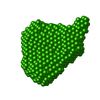 SASDC96: 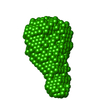 SASDCA6: 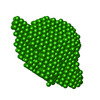 SASDCB6: 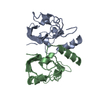 SASDCC6:  SASDCD6: 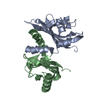 SASDCE6: 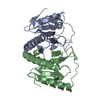 SASDCF6: 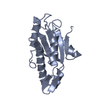 SASDCG6: 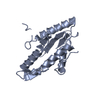 SASDCH6: 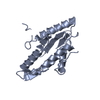 SASDCJ6:  SASDCK6: |
| 由来 |
|
 ムービー
ムービー コントローラー
コントローラー 構造ビューア
構造ビューア 万見文献について
万見文献について



 Marinobacter hydrocarbonoclasticus (strain atcc 700491 / dsm 11845 / vt8) (バクテリア)
Marinobacter hydrocarbonoclasticus (strain atcc 700491 / dsm 11845 / vt8) (バクテリア)